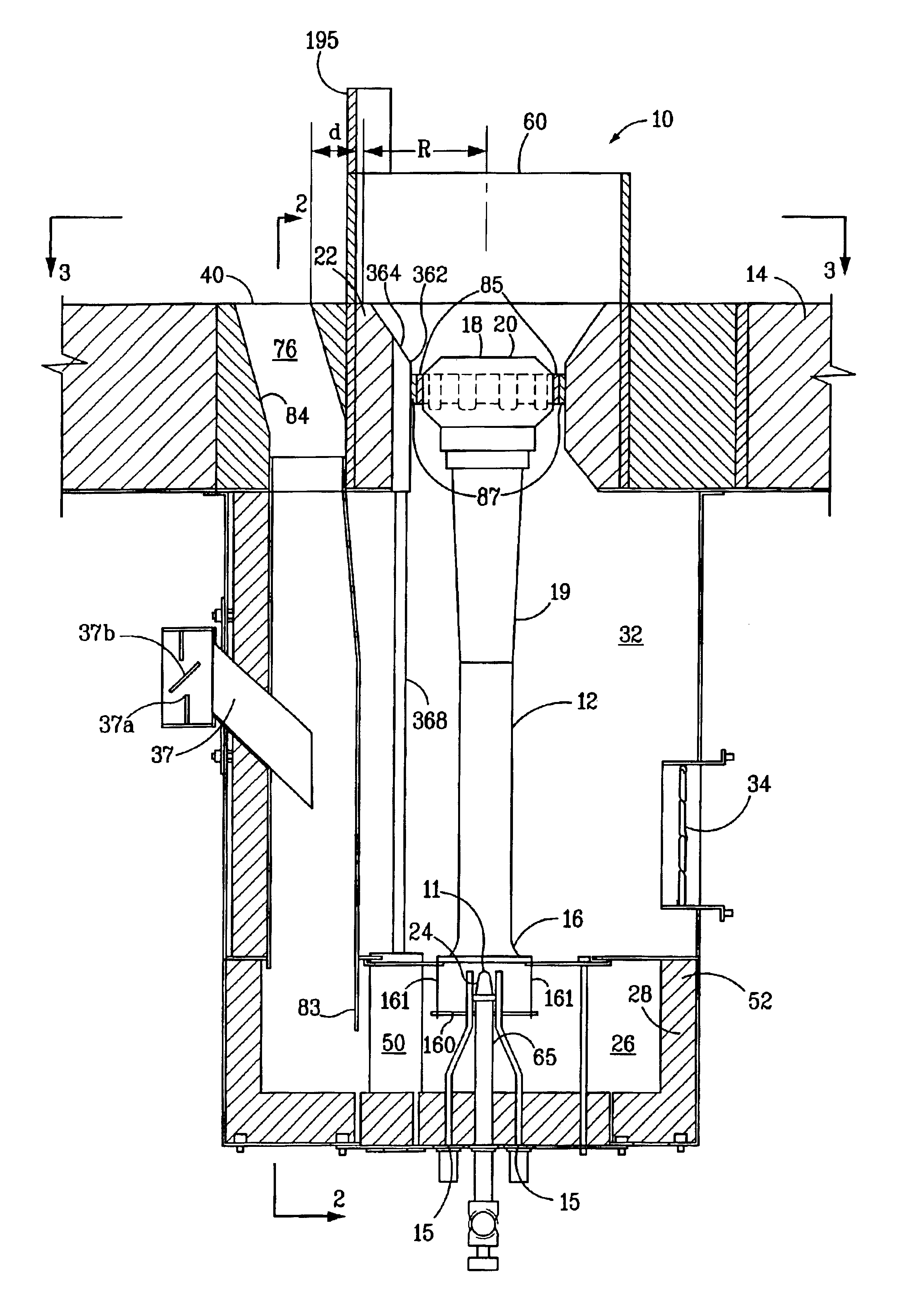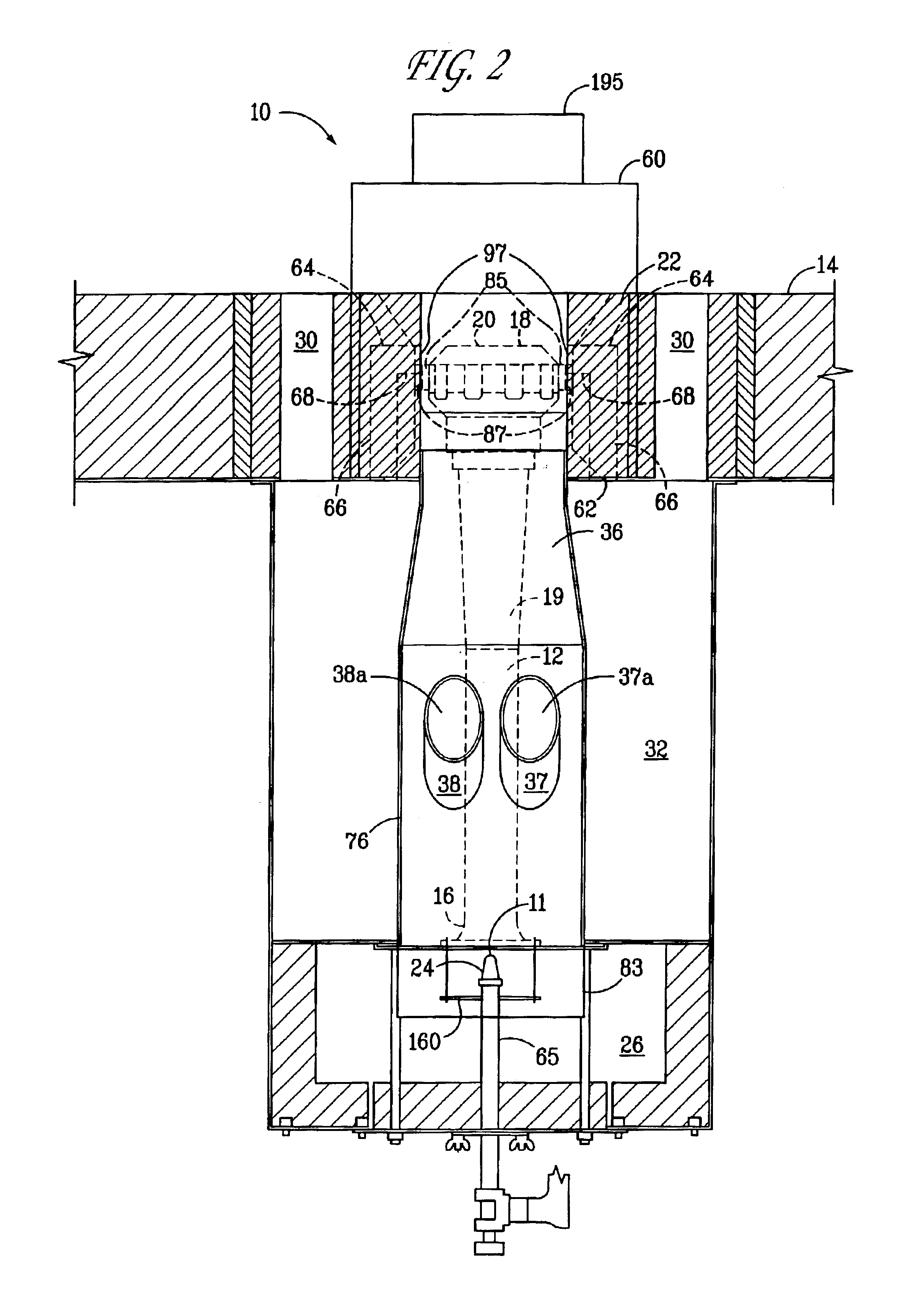Burner with low NOx emissions
- Summary
- Abstract
- Description
- Claims
- Application Information
AI Technical Summary
Benefits of technology
Problems solved by technology
Method used
Image
Examples
example 1
To demonstrate the benefits of the present invention, a pair of pre-mix burners of the type described in U.S. Pat. No. 5,092,761 (as depicted in FIG. 5 of U.S. Pat. No. 5,092,761) were operated at a firing rate of 6 MMBTU / hr per burner, using a fuel gas comprised of 30% H2 / 70% natural gas, without steam injection. During this test, NOx emissions were measured at 88 ppm.
Tests were repeated with steam injection. Steam was injected, per burner, at 133 lb / hr and 195 lb / hr, with NOx emission levels measured at 58 ppm and 49 ppm, respectively.
example 2
In this example, a pair of pre-mix burners employing the features depicted in FIGS, 1-5, 6B, 7B, 9A, 10B, and 12A were tested. The burner employed flue gas recirculation and was operated at a firing rate of 6 MMBTU / hr per burner, using a fuel gas comprised of 30% H2 / 70% natural gas, without steam injection. During this test, NOx emissions were measured at 42 ppm. Very stable flames were observed.
Tests were repeated with steam injection. Steam was injected, per burner, at 133 lb / hr, 195 lb / hr and 292 lb / hr, with NOx emission levels measured at 28.5 ppm, 23.5 ppm and 21 ppm, respectively. Once again, very stable flames were observed in each instance.
Although the burners of this invention have been described in connection with floor-fired hydrocarbon cracking furnaces, they may also be used in furnaces for carrying out other reactions or functions.
It will also be understood that the teachings described herein also have utility in traditional raw gas burners and raw gas burners having a...
PUM
 Login to View More
Login to View More Abstract
Description
Claims
Application Information
 Login to View More
Login to View More - R&D
- Intellectual Property
- Life Sciences
- Materials
- Tech Scout
- Unparalleled Data Quality
- Higher Quality Content
- 60% Fewer Hallucinations
Browse by: Latest US Patents, China's latest patents, Technical Efficacy Thesaurus, Application Domain, Technology Topic, Popular Technical Reports.
© 2025 PatSnap. All rights reserved.Legal|Privacy policy|Modern Slavery Act Transparency Statement|Sitemap|About US| Contact US: help@patsnap.com



